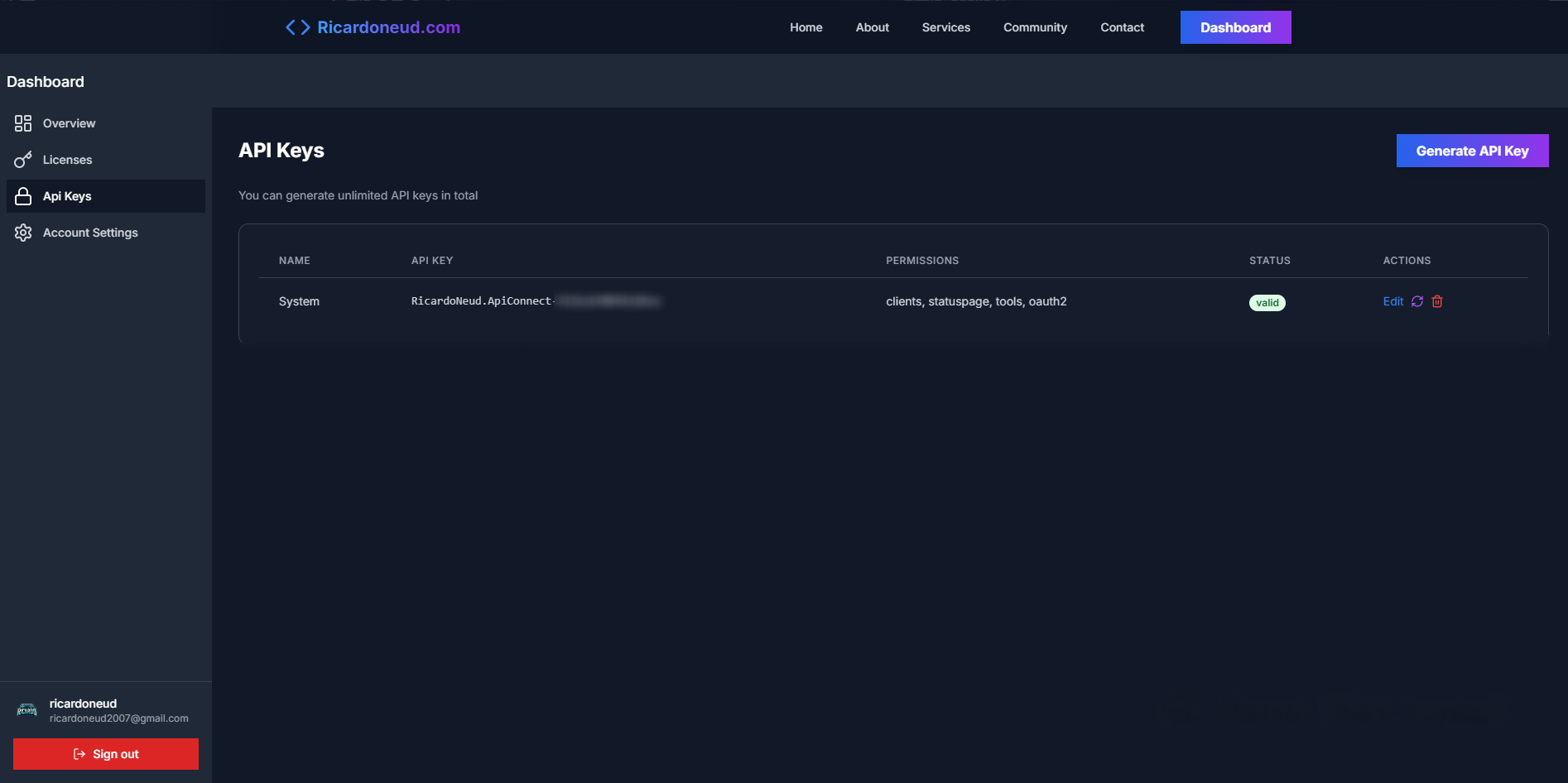This introduction applies to API versions v4 and above, where both API Key Authentication and User Login Authentication are supported. API Key Authentication remains fully compatible for backward support.
Authentication Methods
Access to the API supports two authentication methods:Legacy Method: API Key Authentication
- Log in at Ricardoneud.com
- Navigate to Dashboard → API Keys
- Click the Create API Key button
- In the modal that appears:
- Enter a descriptive name for your API key
- Configure the desired permissions
- Set the state to Production using the environment selector
- Click Generate
- Your API key is now created
Example UI:

Usage
Use the API Key in the Authorization header of subsequent requests:Current Method (v3+): User Login Authentication
Don’t share your screen or take screenshots while your password is in the request body!
API Base URLs
| Environment | Base URL | Current Version |
|---|---|---|
| Production | https://api.ricardoneud.com | v4 |
Start Testing
All API endpoints can be tested directly within this documentation. You will benefit from:- Real-time response previews
- Error handling simulation
- WebSocket event testing (where supported)
